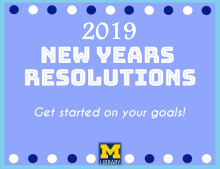Kayla Williams
Library Blogs
Showing 1 - 10 of 22 items
Results
for Date: January 2019
•
I have always been curious and interested in Project Management. The most I knew about it was from observing my Product Owner during my summer internship. Product Owner is somewhat similar to a Project Manager for Agile Methodology in a work environment. I witnessed my PO managing meetings and being a form of communication. It seems as if a PO presents information and reports back to the higher up. But I haven’t gotten a strong understanding of their role especially behind the scenes. So, out of curiosity, I decided to watch Project Management Foundations on Lynda.
•
When the microprocessor was invented in 1972, the US economic productivity was at a 40 year low. Computers became popular in businesses and homes in following years, and what came next radicalized the economy and business forever. Computers allowed businesses newfound abilities for number crunching, data saving, and word documentation.
While computers are revolutionary in their ability to compute repetitive calculations and follow complex programmed instructions, they have never been sufficient at pattern recognition. This makes image and speech recognition extraordinarily difficult for ordinary computers, which is why it took until 2018 to unlock your iPhone using your face and why telephone chatbots are so frustratingly stupid.
While computers are revolutionary in their ability to compute repetitive calculations and follow complex programmed instructions, they have never been sufficient at pattern recognition. This makes image and speech recognition extraordinarily difficult for ordinary computers, which is why it took until 2018 to unlock your iPhone using your face and why telephone chatbots are so frustratingly stupid.

Labyrinth tells the story of two women, in two different times (1209 and 2005), and their quest for a secret of immense power. On an archaeological dig in the south of France, Alice finds two skeletons and a mysterious carving of a labyrinth on a wall, and begins experiencing visions of a past life. Her story is intertwined with that of Alaïs, a young woman in medieval Carcassonne, whose father is a guardian of one of three manuscripts that contain the secret of the Holy Grail. The plot is similar to The Da Vinci Code, but Labyrinth is much better written.
•
With the new semester comes a new slate of special collections meet and greets! These pop-up exhibits bring rare materials out of the library and into Weiser Hall, where we'll be sharing selections from the Joseph A. Labadie Collection. Visitors making their way through Weiser's busy halls will have an opportunity to take a look at books, pamphlets, ephemera, and even LPs while chatting with staff to learn more about our collections.
•
Machine learning has changed, and will continue to change the world around us. Over the course of November, I spent time completing an online Lynda course titled, Deep Learning: Image Recognition by Adam Geitgey. In this course, I learned key concepts about neural networks and built on what I learned in last month’s machine learning course. By the end of this course, I was able to get a toy neural network working and understanding, at a basic level, the different components that play a part in making it function.
•
During my time at the Design Lab, I have been interested in how our work in Open Accessibility can help future students on campus. For example, in the lab we are currently developing tactile maps of the library for the visually impaired. A long-term goal of ours is to, not only produce maps for our university, but to create a workflow so that our research can help other universities do the same.
•
As a resident of Open Accessibility here at the Design Lab, I am interested not only in how to make spaces and resources more accessible at our school with the projects I work on, but also how to create workflows for other people – and other schools – to easily follow and do the same for their spaces and resources. The more automated things are, the easier it is for people follow it and do it themselves, especially those who may not have experience or simply do not have the time. So the best way, in my opinion, to bring open accessibility options to the public, is to automate as much of it as possible.
•
Coming into the Citizen Science arm of the Design Lab, I knew I had decent knowledge of one aspect of the activity: the science part. Having extensive education in scientific fields means that I generally understand what the strengths and weaknesses of science are, what a good data collection protocol looks like, and the sorts of things it can tell us about our world. What I joined knowing quite a bit less about was the “people” aspect of citizen science: the part where we have to engage people and communities to demonstrate how these activities can be beneficial, informative, effective and fun for them as well. One of the things that has allowed me to understand the people aspect of citizen science better was the Rackham DEI workshop on Entering Communities.

Need help keeping up with your New Years Resolutions? Stop by the Shapiro Lobby and check out our New Years book display.

In the third post in our Social Class in the Workplace series, Denise Leyton shares her experience with wealth perception on campus and ways in which we can make conscious choices to ensure the library is a welcoming place to all.